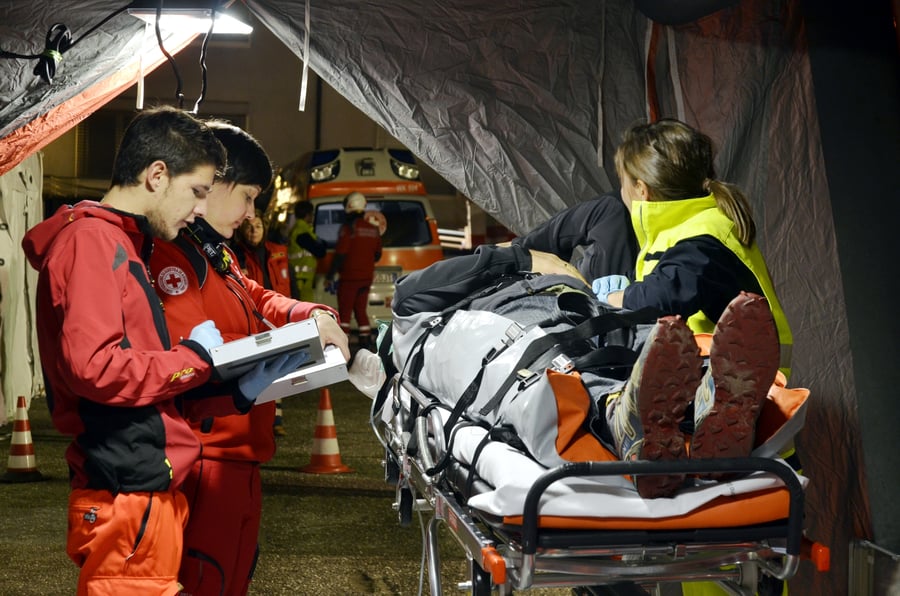
Today’s hospitals must be ready for everything. Whether it means complying with the 250 yard rule, or dealing with a regional or national disaster, or, as has been made so painfully clear, managing the patient surge generated by a national pandemic like COVID, hospitals must be prepared. Unfortunately, disaster can take many forms: earthquakes, floods, disease, and acts of terrorism are just a few. Since there is no such thing as a “normal disaster,” hospitals must be prepared to handle anything the world throws at them. In this article, we will discuss four obstacles a hospital can face when a disaster strikes:
1. Influx of Patients and Prolonged Care
Unfortunately, with any disaster comes victims. Many of those victims are in need of medical care that can only be given at a hospital. Since disasters are often regional or even local, a sudden influx of victims needing medical attention can strain the capacity of the nearest hospitals. Correspondingly, quick discharge or transfer to other hospitals to alleviate the influx is not a given, and in some cases can be impossible. Hospitals need to be ready and able to handle both this sudden influx and maintain care until other preparations can be made.
2. Utility & Communication Outages
Electricity, water, sewage, communication: these are all things we take for granted on a day-to-day basis.
Hospitals depend on all of these to function. Without electricity, much of a hospital's equipment including X-ray machines, dialysis machines and even elevators become useless. Without a working sewage system, toilets do not work and linens can’t be cleaned and disinfected. A lack or slowdown of communication can also wreak havoc on a hospital that is over capacity and is in need of assistance.
In a disaster, one or all of these necessary infrastructure elements can be disrupted for any number of reasons and for an undetermined amount of time.
3. Breakdown of Facilities
Hospitals are not immune to the destructive force of a disaster such as an earthquake or flood. Many times, critical buildings or sections of the hospital are rendered unusable by damage. This creates the need for a triage either outside the hospital or at a nearby location, but relocating an entire hospital or even a section is a tall order as much of the day-to-day life saving equipment is built into the hospital or is too large to move.
4. Dwindling Supplies
Normal deliveries can’t be counted on during a disaster, and many reasons can contribute to why a truck carrying needed essentials would not be able to make it to the hospital in a timely manner. In these situations, hospitals can quickly run out of things such as common medicines, linens, toiletries, and many other essentials.
Regulations state that hospitals must have enough supplies on hand to survive autonomously for 72 hours. Three days may not seem like a long time, but keep in mind that the hospital will already be understaffed and over capacity during a disaster.
Hopefully this article has been thought provoking and useful. Many disasters aren’t preventable but with the proper preparation, obstacles can be overcome and damages diminished.
Editor's Note: This blog was originally published in October 2020. It has been re-published with additional up-to-date content.
















